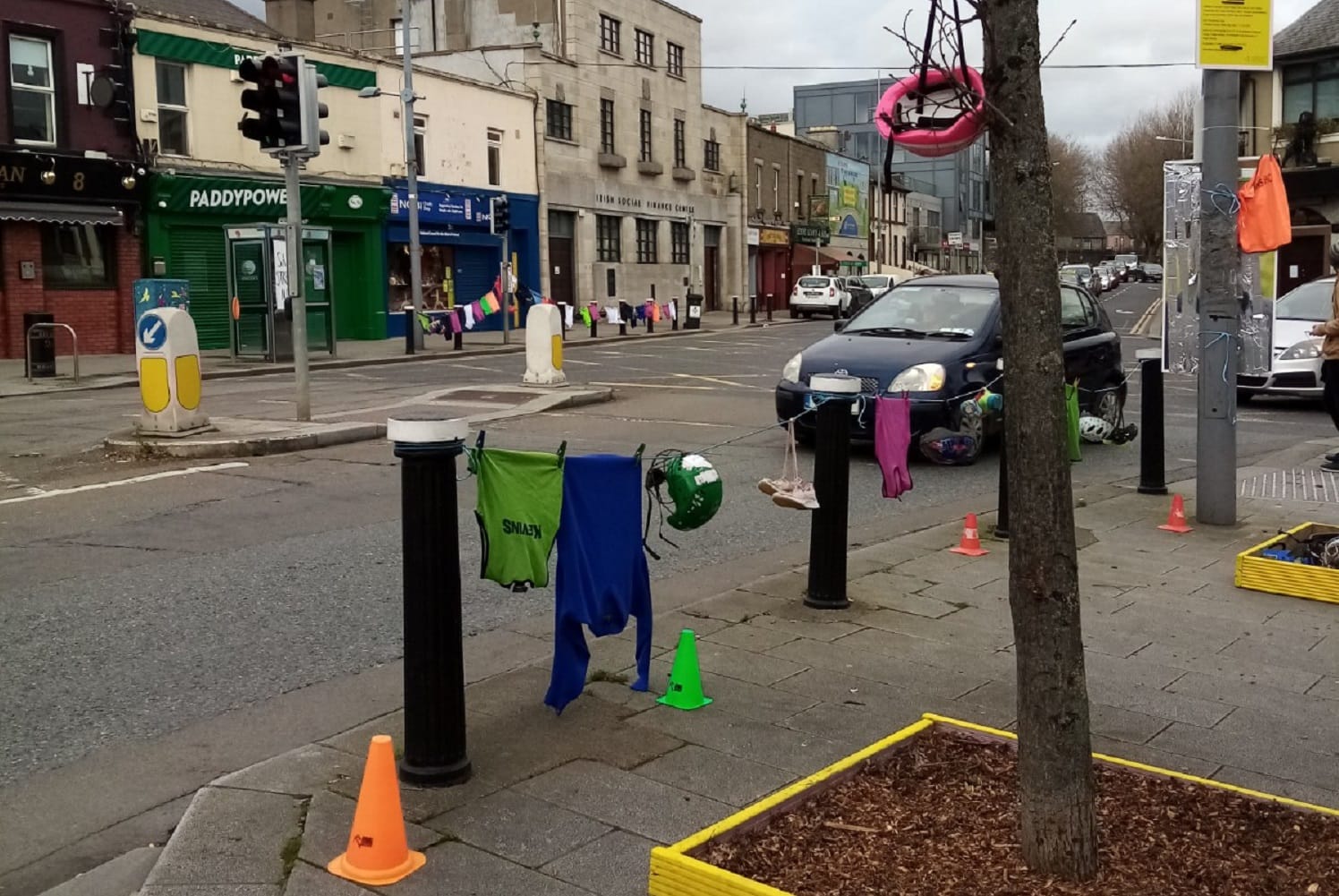What’s the best way to tell area residents about plans for a new asylum shelter nearby?
The government should tell communities directly about plans for new asylum shelters, some activists and politicians say.
“Your ideas are very very good and I will definitely be looking at them more,” said Dublin City Council Senior Engineer Neil O’Donoghue to one local resident.

On Tuesday 24 November at the junction at Emmet Road and Tyrconnell Road in Inchicore, children’s clothes hung on washing lines stretched between two pillars by the side of the street.
The junction, known locally as the yellow box, was the site of a protest organised by a group campaigning for safe walking and cycling in Inchicore.
“Our basic need is that our children can walk to school or their sports club safely,” says Zoe Obeimhen, a mother of four and an organiser of the Safe Streets Now group.
To stand at the yellow box junction is to get the same feeling as standing at a dual carriageway, Obeimhen says. Nine lanes of traffic meet at this junction right in the centre of the village.
Some cars drive through the area at 50kmph just because the infrastructure allows them to, says Obeimhen.
Parents are forced to walk their kids to schools because of the high volume of cars and narrow footpaths, she says. “Which can be so stressful.”
Some residents in Inchicore want the area made safer for pedestrians and cyclists.
Rather than waiting for the council to do something, they are taking matters into their own hands.
Lauren Tuite, a local resident, noticed the problems with Inchicore transport infrastructure during the first lockdown in March, she says.
She clocked the level of car dominance in the area when she was pushing her daughter around in a buggy. “Because there was less traffic, the cars were moving even faster.”
In Dún Laoghaire, the local council installed segregated cycle tracks and widened footpaths because of Covid-19, she said. “This was really vast and glorious cycling infrastructure.”
Although she has no background in transport planning, Tuite set out to see how she could replicate this in her own area.
She looked at the infrastructure in Dún Laoghaire online and transplanted these ideas onto a Google street maps of Inchicore.
Tuite consulted with architects and mobility experts. Residents and local businesses were able to give Tuite feedback on her designs through an online forum on a website that she created.
“I got 100 responses in a couple of weeks. I got 92 very positive responses and then eight less than enthusiastic,” she says.

Tuite’s transport ideas are detailed in her To It, Not Through It plan.
She imagines the Inchicore yellow box junction turned into “a new civic space”, says the plan presented to councillors at the South Central Area Committee meeting last Wednesday.
Cycle tracks, footpaths and an open seating area for restaurants and cafes would replace where cars drive through the junction, it says.
Tuite proposes to stop traffic coming into Inchicore village by placing a roundabout at the south of the junction on Tyrconnell Road by the Mini-Market Polish Food Store.
“Car traffic on Tyrconnell Road will be travelling to Inchicore, rather than through Inchicore,” says the plan.
On the opposite side of the yellow box junction, Tuite’s plans imagine more room for cyclists and pedestrians, and a cycle track and widened footpath in place of a left-turning lane on Grattan Crescent.
“This will allow for outdoor seating on the northern side of the Black Lion pub and will give pedestrians the recommended 2m social distancing space,” Tuite says in the plan.
“This is an example of real democracy,” said Sinn Féin Councillor Daithí Doolan after Tuite’s presentation of the plan at the South Central Area Committee meeting last Wednesday.
The plans have come from residents and community groups, Doolan said. “In many cases, not always, the experts have let communities down.”
Green Party Councillor Sophie Nicoullaud said that she fully supported the plan. “It’s painful to see everything done in the city centre.”
Work needs to be done in residential areas as people are stuck here during lockdown, she said.
Dublin City Council Senior Engineer Neil O’Donoghue was present at the meeting.
“Your ideas are very very good and I will definitely be looking at them more,” O’Donoghue said.
O’Donoghue said that he will be talking to the people behind BusConnects to see about implementing some of the ideas into the project.
He also encouraged Tuite to keep the pressure on BusConnects planners herself.
One problem O’Donoghue did see was the traffic coming from Ballyfermot being blocked off from going into town in this plan, he said.
He also had an issue with the roundabout design which crossed over with a cycle track, he said.
“I believe in the village idea that we should be creating a better space,” he said.
Tuite says that you do not need to be a transport expert to do this in your own area.
“So long as you follow the design manual for urban roads and streets,” she says.
“It’s about trying to create a space where people feel welcome,” Tuite says.
Get our latest headlines in one of them, and recommendations for things to do in Dublin in the other.